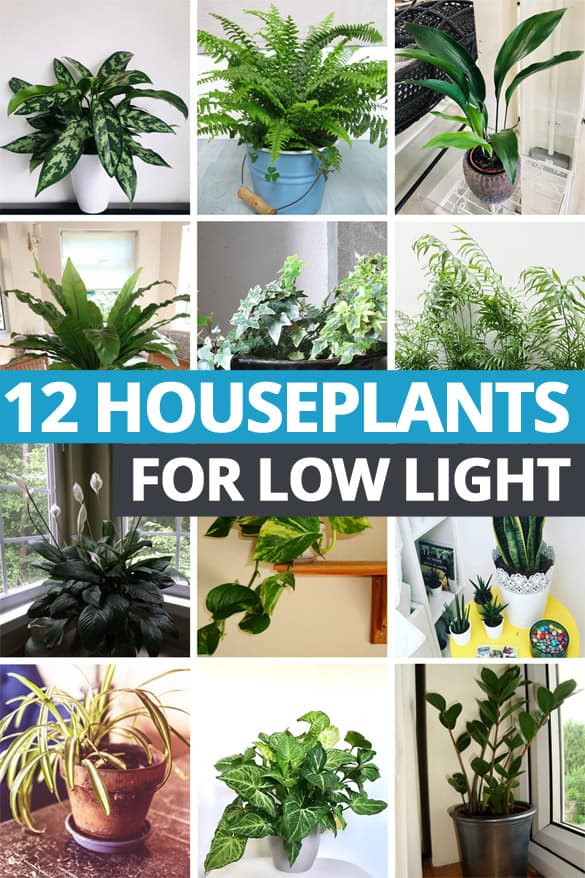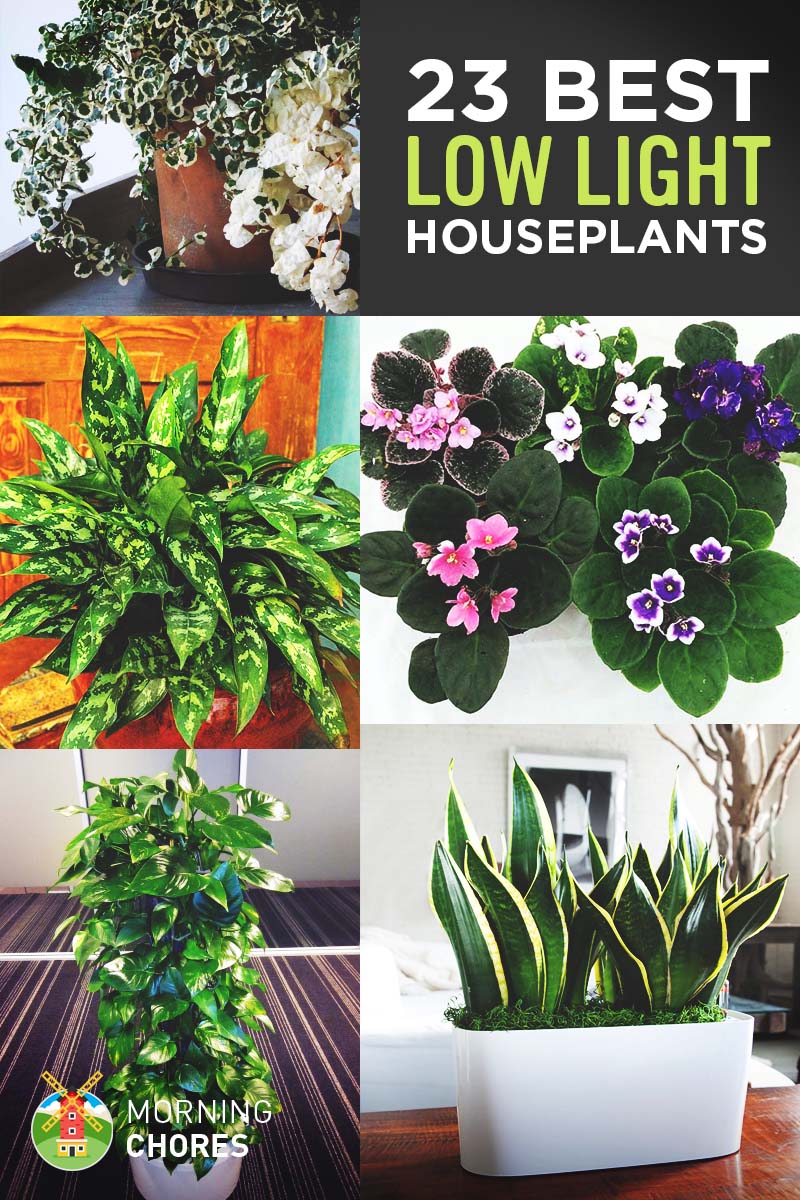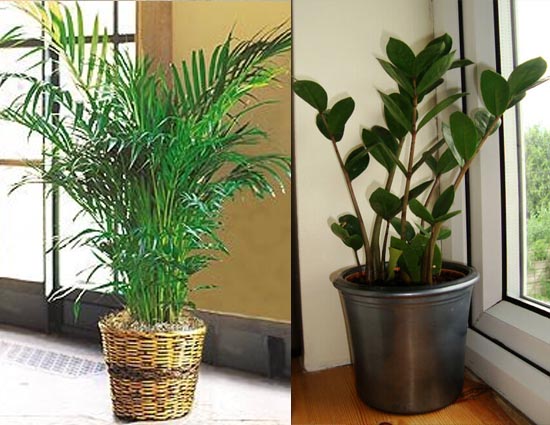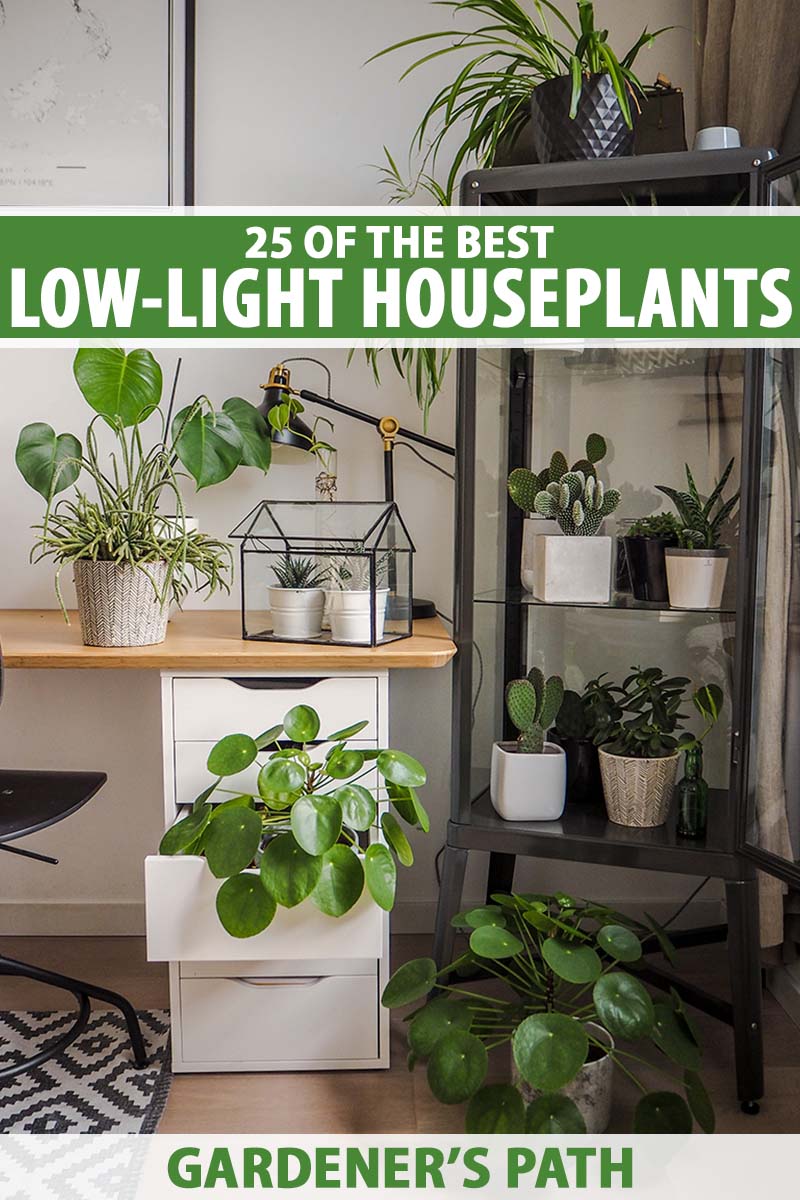Bringing Life to Dark Spaces: Indoor Plants for Dark Rooms
Indoor plants for dark rooms

Dark rooms or spaces without much natural light often pose a challenge when it comes to decorating with plants. Many common houseplants require ample sunlight to thrive and may struggle to survive in darker environments. However, there are several indoor plant varieties that can bring life and beauty to even the darkest corners of your home or office.
One such plant is the snake plant, also known as Sansevieria. This hardy plant is known for its ability to tolerate low light conditions and is a popular choice for dark rooms. The snake plant has long, upright leaves that are often variegated in shades of green and yellow, adding a touch of color to any space. It also helps to purify the air by removing toxins, making it a great choice for indoor environments.
Another indoor plant that thrives in low light is the pothos plant. Pothos, or Epipremnum aureum, is a trailing vine with heart-shaped leaves that come in various shades of green. It is extremely easy to care for and can withstand neglect, making it an ideal choice for those who are not experienced plant caretakers. Pothos can be placed in hanging baskets or can be trained to climb up walls or trellises, adding a touch of greenery to any dark corner.
The zz plant, or Zamioculcas zamiifolia, is another popular choice for dark rooms. This plant has thick, glossy leaves that are a deep shade of green. It is known for its ability to tolerate low light conditions and is also highly tolerant of neglect, making it a great option for those who may not have a green thumb. The zz plant can also help to purify the air and is a great choice for improving indoor air quality.
In conclusion, while dark rooms may present a challenge for plant owners, there are several indoor plants that can thrive in low light conditions. The snake plant, pothos, and zz plant are all great choices for bringing life to dark spaces. With their ability to tolerate low light and their easy care requirements, these plants are ideal for adding greenery and beauty to any room, regardless of the amount of natural light available.
Benefits of Indoor Plants in Dark Rooms
.jpg)
1. Improved air quality
Indoor plants have the ability to purify the air by filtering out harmful pollutants and increasing oxygen levels. In dark rooms, where natural light is limited, indoor plants can still thrive and perform their air-purifying functions. They can absorb carbon dioxide and release oxygen, creating a healthier environment for occupants.
2. Increased humidity
Indoor plants naturally release moisture into the air through a process called transpiration. This can help to increase humidity levels in dark rooms, which tend to be drier due to the lack of sunlight. Higher humidity can be beneficial for individuals with respiratory issues, as it can alleviate dryness and discomfort.
3. Boosted mood and productivity
Studies have shown that having indoor plants in workspaces or living areas can have a positive impact on mood and productivity. Even in dark rooms, the presence of plants can create a sense of tranquility and improve overall well-being. The greenery and natural aesthetic of plants can also help to reduce stress and increase energy levels.
4. Reduced noise
:strip_icc()/peace-lily-spathiphyllum-wallisii-domino-bd41865a1-252ea4c0b35b43d19a41435b16a9cd01.jpg)
Indoor plants can act as natural sound absorbers, helping to reduce noise levels in rooms with limited natural light. Their leaves and branches can absorb and refract sound waves, creating a more peaceful and calming environment. This can be particularly beneficial for individuals who live in noisy urban areas or homes with thin walls.
5. Decorative element
Even in dark rooms, indoor plants can serve as decorative elements that add life and color to the space. With a wide variety of plant species available, ranging from small succulents to large, leafy ferns, there are options to suit any interior design style. Incorporating indoor plants into dark rooms can enhance the overall aesthetic and create a more inviting atmosphere.
Choosing the Right Indoor Plants for Dark Spaces
1. Consider Low Light Tolerant Plants
When selecting indoor plants for dark spaces, it’s important to choose varieties that can thrive in low light conditions. Look for plants that are specifically labeled as “low light tolerant” or “suitable for dark spaces.” These plants are adapted to survive with minimal access to natural sunlight, making them the perfect choice for rooms with limited exposure to light.
2. Opt for Plants with Dark Green Foliage

Plants with dark green foliage have a higher chlorophyll content, which allows them to absorb and utilize light more efficiently. This makes them better suited for dark spaces, as they can make the most out of any available light. Look for plants like snake plants, pothos, and ZZ plants, which have deep green leaves that can add a touch of life and vibrancy to a dark room.
3. Consider Plants with Succulent or Thick Leaves

Plants with succulent or thick leaves are more likely to store moisture, which enables them to tolerate low light conditions. Their ability to retain water allows them to survive longer without regular exposure to sunlight. Consider plants such as jade plants, spider plants, or hoya plants, which have thick and fleshy leaves that can store water and nutrients, making them suitable for dark spaces.
4. Choose Plants that Can Thrive in High Humidity

Dark spaces often have higher humidity levels, as they tend to receive less air circulation and sunlight. Therefore, it’s important to choose plants that can thrive in such conditions. Plants like peace lilies, ferns, or philodendrons are known for their ability to tolerate high humidity and can adapt well to the environment of a dark room.
5. Evaluate Artificial Lighting Options

If a dark space lacks natural light completely, you may need to consider providing artificial lighting to keep your indoor plants healthy. Look for lights specifically designed for plants, such as grow lights or full-spectrum lights. These can provide the necessary light spectrum that plants need for photosynthesis. Be sure to position the lights strategically to ensure even light distribution and avoid burning or damaging the plants.
By considering these factors and selecting the right indoor plants for dark spaces, you can bring life and greenery to even the darkest of rooms. Don’t forget to regularly monitor and adjust the care routine for your plants to ensure their well-being in their light-limited environment.
Low-Maintenance Indoor Plants for Dark Rooms
If you have a dark room in your home and still want to enjoy the benefits of having indoor plants, there are several low-maintenance options that can thrive in low light conditions.
One option is the snake plant, also known as Sansevieria. This plant is hardy and can tolerate low light levels, making it a perfect choice for a dark room. It has long, upright leaves that are green and yellow in color, adding a touch of brightness to the space.
Another low-maintenance plant for dark rooms is the ZZ plant, or Zamioculcas zamiifolia. This plant has thick, glossy leaves that can tolerate low light and drought conditions. It is also known for its ability to purify the air, making it a great addition to any space.
The Chinese evergreen, or Aglaonema, is another plant that can thrive in dark rooms. It has beautiful, variegated leaves that come in a variety of colors, including green, silver, and pink. It is a low-maintenance plant that does not require much water or sunlight to thrive.
If you want a plant with a pop of color, consider the peace lily. This plant has dark green leaves and produces beautiful white flowers. It can tolerate low light conditions and helps to purify the air in your space.
When caring for low-light indoor plants, it’s important to avoid overwatering. These plants do not need as much water as plants that require more sunlight. It’s best to let the soil dry out between waterings to prevent root rot.
In conclusion, there are several low-maintenance indoor plants that can thrive in dark rooms. From snake plants to ZZ plants, there are options for every style and preference. With a little care and attention, you can bring life and greenery to even the darkest spaces in your home.
Tropical and Exotic Indoor Plants for Dark Spaces
Dark spaces can be challenging for plant enthusiasts, but that doesn’t mean you have to give up on having a lush indoor garden. There are several tropical and exotic plants that can thrive in low-light conditions and bring a touch of the jungle to your home.
1. Snake Plant (Sansevieria)
A popular choice for low-light environments, the snake plant is known for its tall, upright leaves that resemble the patterns of a snake. This plant is extremely resilient and can tolerate almost any lighting condition, including dark rooms. It also helps improve indoor air quality by filtering out toxins.
2. Zamioculcas Zamiifolia (ZZ Plant)
The ZZ plant is another excellent option for dark spaces. Its waxy, dark green leaves have a unique texture and can add a tropical vibe to any room. This plant is known for its ability to survive in low-light conditions and can go weeks without water, making it perfect for those who tend to forget to water their plants.
3. Aglaonema (Chinese Evergreen)
The aglaonema is a popular choice for dark rooms due to its ability to thrive in shady areas. This plant has attractive leaves in shades of green, silver, and red, adding a pop of color to your indoor space. It prefers indirect light but can tolerate low light conditions, making it an excellent choice for dark corners.
4. Pothos (Epipremnum aureum)

Pothos plants are not only beautiful but also very versatile when it comes to lighting conditions. They can adapt to a wide range of environments, including low-light areas. The heart-shaped leaves come in various shades of green and can trail down from hanging baskets or climb up walls with support.
5. Philodendron
Philodendrons come in a variety of species, each with its own unique leaf shape and coloration. They are known for their ability to thrive in low-light conditions, making them a great choice for dark rooms. Whether you prefer the classic heart-shaped leaves of the Philodendron scandens or the split leaves of the Philodendron bipinnatifidum, these plants can bring a lush tropical feel to your space.
Creative Ways to Display Indoor Plants in Dark Rooms
1. Utilize artificial lighting

One creative way to display indoor plants in dark rooms is to make use of artificial lighting. Install LED grow lights or fluorescent lights near the plants to provide them with the necessary light to thrive. Place the lights strategically to highlight the plants and create a visually appealing display.
2. Opt for low-light tolerant plants
Choose indoor plants that are known for their ability to thrive in low-light conditions. Some examples include snake plants, pothos, and ZZ plants. These plants are well-suited for dark rooms and can add a touch of greenery even in the absence of natural light.
3. Create a hanging plant display

If space is limited, consider creating a hanging plant display in dark rooms. Hang plants from the ceiling using decorative hooks or mount them on shelves with hanging brackets. This not only saves space but also adds an interesting visual element to the room.
4. Use reflective surfaces
Maximize the amount of light in a dark room by using reflective surfaces. Place indoor plants near mirrors or shiny objects to bounce and amplify the available light. This technique can help brighten up the space and create the illusion of more natural light.
5. Cluster plants together

Another creative way to display indoor plants in dark rooms is by clustering them together. Grouping plants can create a lush and lively display, even in low-light conditions. Arrange different plants with varying heights and textures to add depth and visual interest to the space.
6. Experiment with unique containers
Enhance the visual appeal of indoor plants in dark rooms by experimenting with unique containers. Use colorful pots, hanging baskets, or terrariums to add a pop of color and style to the space. These unique containers can become a focal point and draw attention to the plants.
7. Consider vertical gardening

If floor space is limited, vertical gardening is an excellent option for displaying indoor plants in dark rooms. Install vertical planters, wall-mounted shelves, or use a trellis to create a vertical garden. This not only saves space but also adds a decorative element to the walls.
By utilizing artificial lighting, choosing low-light tolerant plants, creating hanging displays, using reflective surfaces, clustering plants, experimenting with unique containers, and considering vertical gardening, you can bring life to dark rooms with indoor plants.
Caring for Indoor Plants in Dark Rooms
1. Choose the Right Plants
:strip_icc()/152450971_330252378409604_3241993008874354931_n-5d5f2fc6c554456096f3efe9ab189a6b.jpg)
When selecting indoor plants for dark rooms, it’s important to choose species that can thrive in low light conditions. Opt for plants that are known to tolerate and even thrive in shady environments. Some examples include snake plants, ZZ plants, pothos, and peace lilies.
2. Positioning
Proper positioning of your indoor plants is essential in dark rooms. Place them near windows or other sources of natural light to maximize their exposure. If there are no windows available, you can consider using artificial light sources, such as fluorescent or LED grow lights, to provide the necessary light for your plants.
3. Avoid Overwatering
In dark rooms, plants may not require as much water as those in well-lit areas. Overwatering can lead to root rot and other issues. It’s important to only water your indoor plants when the top inch of soil feels dry to the touch. Ensure that your pots have good drainage to prevent water from accumulating.
4. Regular Dusting
In dark rooms, indoor plants can accumulate dust more quickly. This can block sunlight and hinder their growth. Regularly dust the leaves with a soft, damp cloth to remove any dirt or dust buildup. This will help the plants to absorb light more effectively and keep them healthy.
5. Fertilize Appropriately

Indoor plants in dark rooms may not need as much fertilizer as those in well-lit areas. Overfertilizing can lead to nutrient burn and other issues. Use a slow-release or diluted fertilizer and follow the instructions on the packaging. It’s important to avoid fertilizing during the plant’s dormant period, as they may not be actively growing and won’t require extra nutrients.
By following these care tips, you can ensure that your indoor plants thrive and bring life to your dark rooms. Remember to always choose plants that are suitable for low light conditions and provide them with the necessary care they need to flourish.
Common Mistakes When Growing Indoor Plants in Dark Spaces
1. Choosing the wrong plant species
One common mistake when growing indoor plants in dark spaces is choosing the wrong plant species. Not all plants thrive in low-light conditions, so it’s important to select species that are well-suited for darker rooms. Avoid plants that require a lot of direct sunlight, as they may struggle to survive in a dark environment. Instead, opt for shade-loving plants that can tolerate lower light levels, such as snake plants, peace lilies, or ZZ plants.
2. Overwatering the plants

Overwatering is another mistake that many people make when growing indoor plants in dark spaces. Since lower light levels can affect the rate of evaporation, it’s crucial to adjust your watering schedule accordingly. Overwatering can lead to root rot and other fungal diseases, which can be detrimental to the health of your plants. It’s better to underwater than to overwater, so make sure to let the soil dry out between waterings and only water when necessary.
3. Failing to provide adequate drainage

Proper drainage is essential for indoor plants, especially when growing them in dark spaces. Without proper drainage, excess water can accumulate in the pot, leading to waterlogged soil and root rot. Make sure your plant pots have drainage holes at the bottom to allow water to escape. Additionally, consider using a well-draining potting mix that promotes good airflow and prevents water from pooling around the roots.
4. Neglecting to clean the leaves
An often overlooked mistake when growing indoor plants in dark spaces is neglecting to clean the leaves. Dust and debris can accumulate on the leaves over time, blocking sunlight and hindering the plant’s ability to photosynthesize. Regularly wipe the leaves with a damp cloth to remove dust and keep them clean. This will ensure that your plants can efficiently absorb the available light and stay healthy.
5. Not providing enough artificial light
In dark rooms, natural light may not be sufficient for the growth of indoor plants. To compensate for the lack of light, consider providing additional artificial lighting. LED grow lights are a popular choice as they can emit specific wavelengths of light that are beneficial for plant growth. Place the lights close to the plants and adjust the duration and intensity according to the plant’s light requirements. This will help supplement the natural light and promote healthy growth.
By avoiding these common mistakes, you can successfully grow indoor plants in dark spaces and create a vibrant and green atmosphere even in the absence of natural light.
Transforming a Dark Room with Indoor Plants: Before and After
:max_bytes(150000):strip_icc()/low-light-conditions-houseplants-1902917-834ee8847a324939b796845a6bc22d36.png)
Before:
A dark room can often feel small, gloomy, and unwelcoming. The lack of natural light can make it difficult to see and navigate, and the space may appear dull and lifeless. The dark walls and dim lighting can create a somber atmosphere that is not conducive to productivity or relaxation.
Furthermore, without sunlight, it can be challenging for plants to thrive in a dark room. Most plants require adequate light to undergo photosynthesis and grow, so a dark room may not be an ideal environment for them to flourish.
After:
However, with the addition of indoor plants, a dark room can be transformed into a vibrant and inviting space. The green foliage of the plants brings life and brightness to the room, creating a visually appealing and relaxing atmosphere. The plants act as natural air purifiers, improving the air quality and making the room feel fresher and more rejuvenating.
Choosing the right plants for a dark room is essential. Some plants, such as peace lilies and snake plants, are known for their ability to thrive in low light conditions. These plants have adapted to survive in shady areas of forests, making them perfect for a dark room. Their lush leaves and unique textures add a touch of beauty and elegance to the space.
In addition to their aesthetic appeal, indoor plants in a dark room can also have a positive impact on mental well-being. Research has shown that being around nature and greenery can reduce stress, improve mood, and increase productivity. By bringing plants into a dark room, the space becomes more calming and peaceful, creating a sanctuary for relaxation and contemplation.
In conclusion, the addition of indoor plants can completely transform a dark room, turning it into a bright and lively space. With the right plants and proper care, not only will the room look more inviting, but it will also contribute to a healthier and more enjoyable living environment.
Видео:
No Light? No Problem! How To Grow Indoor Plants In Low Light – Houseplant Care 101 Ep. 13
No Light? No Problem! How To Grow Indoor Plants In Low Light – Houseplant Care 101 Ep. 13 by Plant Life with Ashley Anita 10 months ago 12 minutes, 57 seconds 12,702 views
30 Favorite Low-Maintenance LOW LIGHT INDOOR PLANTS + Styling Tips | Julie Khuu
30 Favorite Low-Maintenance LOW LIGHT INDOOR PLANTS + Styling Tips | Julie Khuu by Julie Khuu 1 year ago 23 minutes 646,155 views
13 Ways To Brighten A Dark Room
13 Ways To Brighten A Dark Room by Reynard Lowell 8 months ago 9 minutes, 7 seconds 98,390 views
Absolute Top 20 EASIEST Plants to Look After
Absolute Top 20 EASIEST Plants to Look After by Sheffield Made Plants 8 months ago 10 minutes, 56 seconds 125,290 views